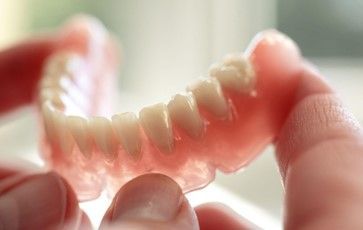Composite Vs. Amalgam: Which Filling Is Best for Your Damaged Tooth?
Admin • January 5, 2021
Dental fillings are an effective way to reinforce and repair badly damaged teeth and can help you avoid resorting to bridges or crowns. However, not all fillings are created equal, and in some cases, you may be able to choose the type of filling(s) you receive.
Most people are familiar with the silvery appearance of amalgam fillings, but you may also be able to choose fillings from discreet, tooth-colored composite resin. Each of these types of tooth filling comes with its own advantages and disadvantages, so familiarizing yourself with these pros and cons can help you make the right choice.
Advantages and Disadvantages of Amalgam Fillings
Dentists have used dental amalgam to restore damaged teeth for well over a century, and amalgam fillings still have merits when compared to more modern, composite resin fillings. For starters, they are extremely durable. Dental amalgam is a mixture of metals very resistant to wear, and a well-maintained amalgam filling can last for 10-15 years before repairs or replacement becomes necessary.
Fillings from dental amalgam are also considerably cheaper than their composite counterparts. This can be a boon if you need to repair a damaged tooth on a tight budget or you have widespread tooth decay and require fillings in several teeth. Some dental insurance carriers will only cover the cost of amalgam fillings, especially for posterior teeth, and choosing composite fillings may lead to higher bills or co-pays.
Unfortunately, amalgam fillings aren't exactly discreet. The silvery metal alloy used to create them does not blend in with the color of the surrounding tooth enamel and can cause the living portions of the repaired tooth to become dark and discolored over time. Amalgam fillings are particularly noticeable on incisors and other anterior teeth.
Dental amalgam also contains mercury, a toxic metal. The amalgam creation process neutralizes the toxic effects of the mercury content, but it can still cause unpleasant allergic reactions in a very small number of dental patients. If you have any known allergies to metal, you might want to avoid amalgam fillings entirely.
Advantages and Disadvantages of Composite Fillings
Dental composites are from a mixture of plastic resins and ceramic fillers, which create a malleable substance that hardens over time. Unlike amalgam fillings, composite fillings closely mimic the look and color of healthy, undamaged tooth enamel, and composite fillings from a skilled dentist can be practically invisible.
Dental composites are also highly flexible and mold themselves as they harden to fit the contours of the damaged tooth. This allows dentists to insert composite fillings without removing large portions of healthy enamel and dentin from the damaged tooth, further improving the cosmetic appearance of the repaired tooth.
These advantages mean that composite fillings are ideal for restoring the strength and appearance of damaged anterior teeth, such as incisor teeth. These teeth are clearly visible to others when you smile, laugh, or speak.
Composite fillings can also restore damaged posterior teeth, but be warned - dental composites are softer than dental amalgams and more vulnerable to wear. Chewing foods places a lot of physical stress on your posterior teeth and can cause composite fillings to wear out more quickly. However, you should still expect a composite filling to last five to seven years.
Creating a composite filling is also a complex, time-consuming process, and you may need to make several trips to your dentist before a composite filling can be installed. If you don't have a comprehensive dental insurance plan, costs for repeat appointments can add up quickly. By contrast, an amalgam filling can usually be created and inserted in a single appointment.
Good arguments exist for both amalgam and composite fillings. Your dentist will help you decide which type of filling is best for your situation, but if you have any more questions about different types of dental fillings, contact the experts at Advanced Dental Care.

Missing teeth can affect your daily life, from difficulty chewing and speaking to feeling self-conscious about your smile. If you're struggling with discomfort while eating, trouble speaking clearly, or noticeable gaps in your smile, it may be time to consider dentures or partials. These dental solutions can restore both the function and appearance of your smile, helping you regain comfort and confidence in your daily activities.

Learn effective tips for maintaining your oral health at home, including brushing, flossing, using mouthwash, and making healthy dietary choices. Discover the importance of hydration, regular self-exams, and avoiding tobacco use to keep your teeth and gums in top condition. This guide provides simple steps to help you maintain a healthy smile and prevent oral health problems.
Read this blog to explore the differences between dental crowns and bridges, their purposes, and how to choose the best option for your dental health.

Discover how oral health and overall wellness are connected. Explore how maintaining good dental hygiene can prevent systemic diseases, support heart and diabetes health, enhance digestion, and boost mental well-being. Learn practical tips for integrating dental care into your overall health strategy.
Do you use dentures? Read our blog to learn more about how to maintain your dentures and keep them in top shape.
Read this blog to learn some common dental issues in older adults and what you can do to maintain your oral health as you age so your smile never changes.
Read this blog post to learn more about practicing preventative dental care from a young age with your children. Contact us to find out more.
In this article, you will find six compelling reasons to get a dental checkup before leaving on vacation. Keep reading to learn more.
Many seniors make common oral health mistakes that can have serious consequences for their health. Discover some of the most prevalent oral health mistakes.







